10 Classic Christmas Decor Traditions and Where They Came From
The history behind our most beloved Christmas decorations makes these traditions even more meaningful.
The nostalgia of the classic Christmas decorations we bring out year after year is one of the sweetest parts of the holiday season. Unwrapping glass ornaments that have been passed down through generations, hanging stockings one by one, and smelling the aroma of spiced gingerbread baking in the oven is what Christmas magic is made of.
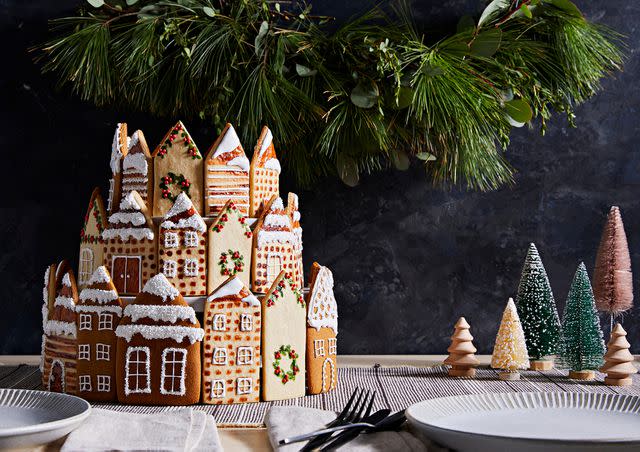
Jacob Fox
If you've ever wondered why we deck the halls with evergreen wreaths, put ornaments on the Christmas tree, and line holiday village houses on the mantel, grab a cup of hot cocoa and keep reading to learn about the history behind some of today's most beloved Christmas decorations.
Related: 10 Iconic Christmas Trends That Are Making a Comeback This Year
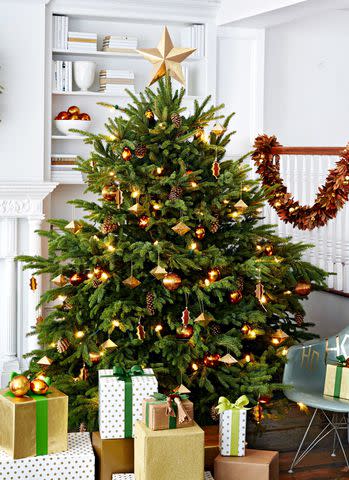
1. The Classic Christmas Tree
There are records of fresh greenery being used to celebrate Christmas in England in the 15th century, but it wasn't until the 16th century that the decorated Christmas tree as we know it first appeared in Germany. The story goes that Christians would bring evergreen trees into their homes to celebrate Christmas and adorn them with candles to represent the star over Bethlehem. This led to the popularity of Christmas tree markets in the following century, where people would purchase a tree and take it home. These trees were traditionally decorated it with apples, gingerbread, roses, and other sweets.
It wasn't until the 19th century that the Christmas tree was introduced in the United States by German settlers and the tradition grew in popularity until the first decorated tree was displayed at the White House in 1853.
Related: 46 Creative Christmas Tree Themes to Show Off Your Personality
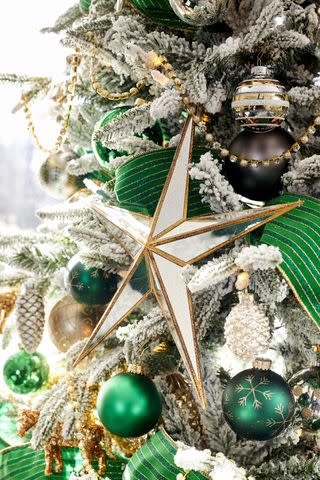
Adam Albright
2. Glass Ornaments
While the first Christmas tree decorations were humble, they evolved to become more elaborate with time. The beautiful glass ornaments that we use on our trees today first emerged in Germany in the 16th century and were produced in a town called Lauscha. They began as small glass beads that were made into garlands and eventually turned into colored glass ornaments and figurines, taking on the ornament form we know today. The glass ornaments were hand-blown and hand-painted, and their production soon became a sought after skill given the demand for these festive decorations. In the mid 1900s, Shiny Brite ornaments experienced a surge in popularity and solidified the shiny glass baubles as an iconic Christmas trend.
Related: The 29 Best Christmas Ornaments of 2023 to Bring New Life to Your Tree
3. Ceramic Trees
Vintage ceramic Christmas trees are a retro-style holiday decoration that first became a hit in the 1960s when artificial decor was becoming popular. The trees varied in size, but were typically green or white, and made from fired clay that had a glossy glazed finish that was adorned with colorful lights. These vintage trees have become a prized collector's item and are a fun way to add a nostalgic touch to your holiday decor.

Jacob Fox
4. Gingerbread Houses
An elaborately decorated gingerbread house dotted with colorful candies may be a holiday decor staple in your Christmas kitchen, but did you know that this tradition dates all the way back to 16th century Germany? The Grimm Brothers' fairytale story of Hansel and Gretel popularized gingerbread houses in the early 1800's, and the baked creations became a true art form that has continued to fill homes with that quintessential spiced aroma we associate with the holiday season.
Related: The 11 Best Gingerbread House Kits for the Whole Family to Enjoy
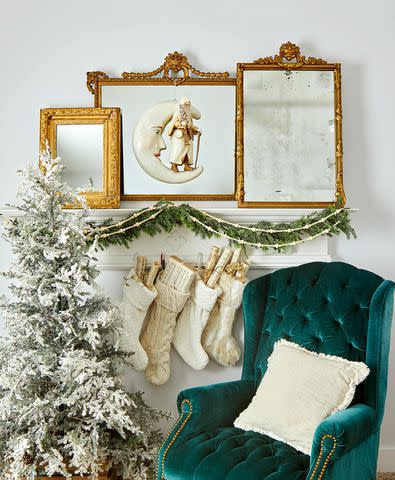
5. Christmas Stockings
Christmas stockings have been hung by the chimney with care and waiting to be filled by St. Nicholas since the early 19th century. The holiday myth that goes along with this Christmas tradition is that St. Nick secretly helped a family suffering from poverty by filling their stockings with bags of gold. Following this tale, children in Europe began to hang stockings or put out winter boots for St. Nick to fill with gifts—one of which was traditionally an orange since it resembled the gold balls that supposedly landed in the first Christmas stockings.
Related: 11 DIY Christmas Stockings for a Fun Holiday Touch

6. Traditional Christmas Wreaths
Fresh greenery has been used to decorate homes for Christmas since as early as the 15th century, but the idea of a wreath came as a result of scraps that were trimmed from Christmas trees a century later in northern Europe. In order to utilize every part of the tree and allow nothing to go to waste, the trimmings were turned into a circular shape, representing the eternal life that is a pillar of Christian faith. These circular trimmings were originally hung on doors or used to hold Advent candles that were lit throughout the four Sundays leading up to Christmas Eve.
Related: 56 DIY Christmas Wreath Ideas for Every Holiday Style
7. Tinsel
Tinsel is an iconic holiday decor trend that evokes old world charm and has been a traditional Christmas staple since the 17th century. The shimmery strands originally consisted of thin strips of silver and were designed to reflect the lit candles on a tree. At the turn of the 20th century, tinsel was mass produced from an aluminum-based material to avoid the tarnishing problem that was encountered with silver. The metallic strands grew in popularity and by the 1950's it was commonly used on Christmas trees in its original individual strand form as well as through garlands.
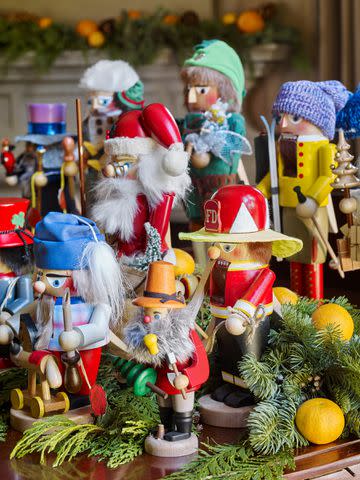
Emily Followill
8. Nutcrackers
Nutcrackers are wooden dolls that were originally designed to look like toy soldiers and served both a decorative purpose as well as a practical one—to crack nuts! They were first introduced in Germany in the 17th century, but it wasn't until the 19th century that demand grew for these Christmas decorations and they began to be mass produced in a variety of colors, sizes, and designs.
Related: How Nutcrackers Became Classic Christmas Decor
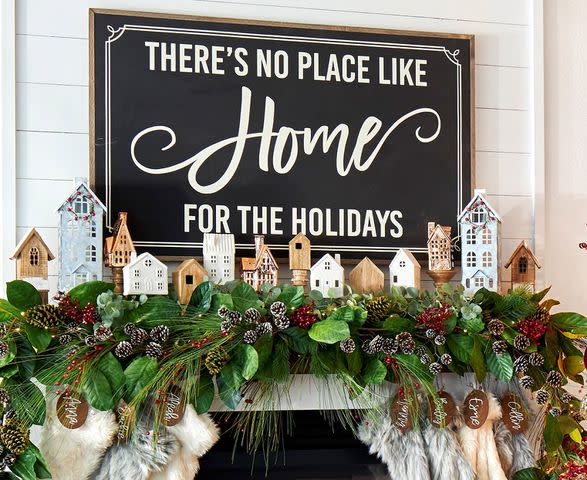
9. Christmas Villages
The charming Christmas villages often set up on a Christmas mantel or displayed on a window sill find their origins in late 18th century United States. The villages consisted of miniature houses with ornate, colorful decorations and typically included town staples such as a church building. Mass production began in the second half of the 20th century when the Christmas village components started being made first from paper and then porcelain for people to collect and build upon every year.
Related: The History of Christmas Villages Makes Us Love The Tradition Even More
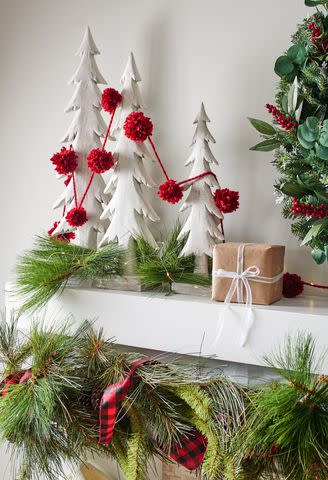
10. Red and Green Christmas Decor
Red and green is a classic color combination when it comes to Christmas decor and the iconic color palette seems to have a few different origins. The first is believed to be ancient Roman times when homes were decorated with holly, an evergreen plant with red berries, during the month of December. Similarly, ancient Celtics believed holly was a symbol of prosperity during the dead of winter. During the Victorian times, the two colors were used on Christmas cards and decorations, but it wasn't until Coca-Cola used red and green in their Christmas advertising at the beginning of the 20th century that the pairing became a true holiday staple.
Related: 15 Classic Red and Green Christmas Decorating Ideas
For more Better Homes & Gardens news, make sure to sign up for our newsletter!
Read the original article on Better Homes & Gardens.

